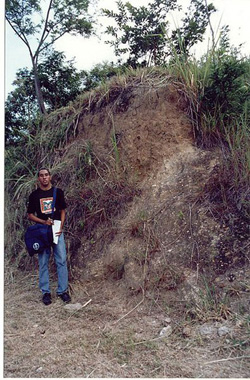
The Components of Soil
Soil is made mostly of rock and mineral particles that derive from the weathering process, but it also contains the remains of living things and decaying plants and animals. We call the rock and mineral particles the inorganic component of soil. The inorganic particles in a soil vary in size. The smallest particles are called clay particles, the medium-sized ones are called silt, and the largest particles are called sand particles. Most soils are a mixture of sand-, silt-, and clay-sized particles; it is rare to find a soil made entirely of just one size.
The remains of dead plants and animals are the soil’s organic component. This organic component gives rise to humus, the dark crumbly part of some soils made from the decay of plant and animal materials. Not all soils have a rich supply of humus, because not all soils support a lot of living organisms. Its development depends on the climate it is in. Soil’s organic matter contains many nutrients and plays an important role in soil fertility, or the ability that a soil has to provide necessary plant nutrients. The best agricultural soils are therefore rich in humus.